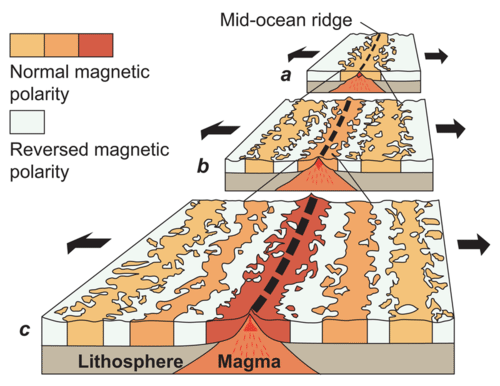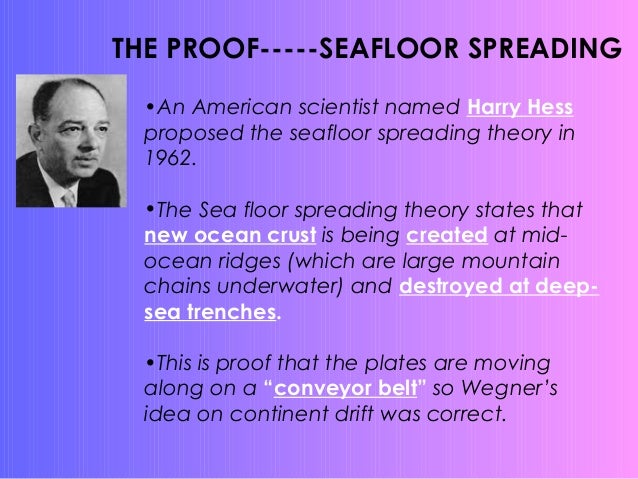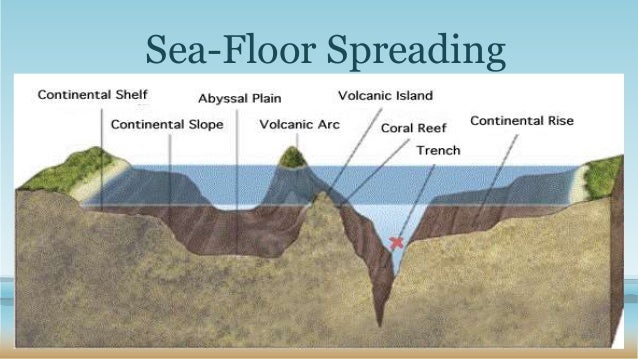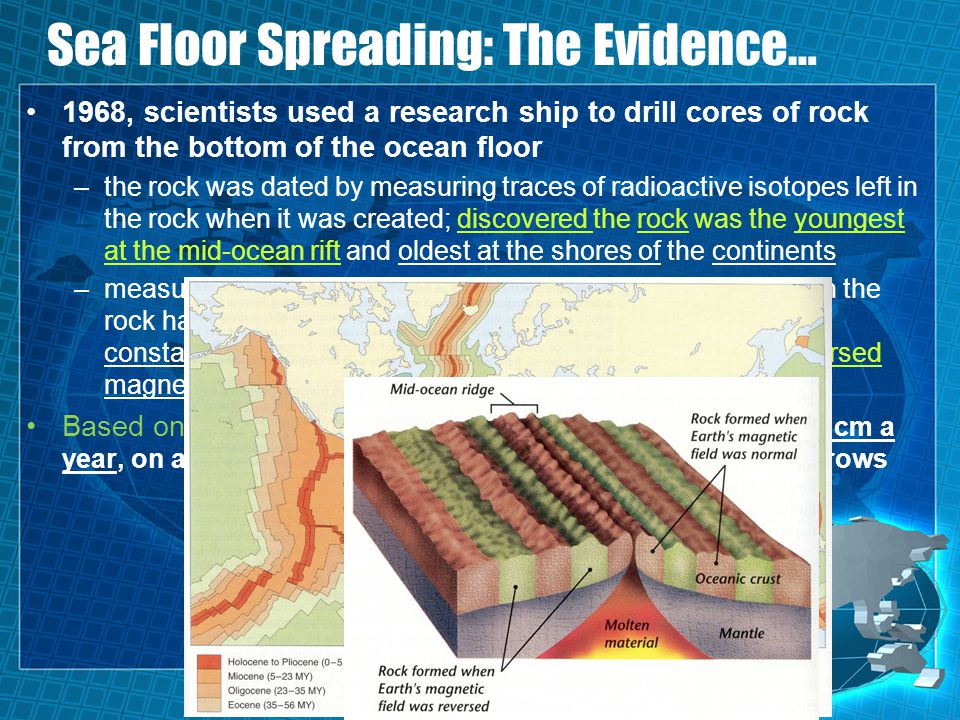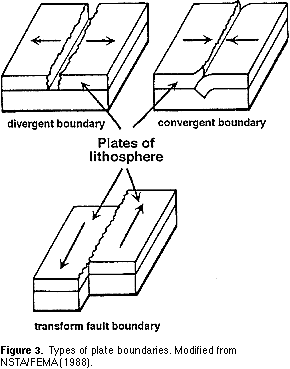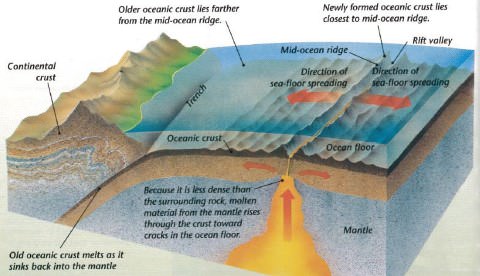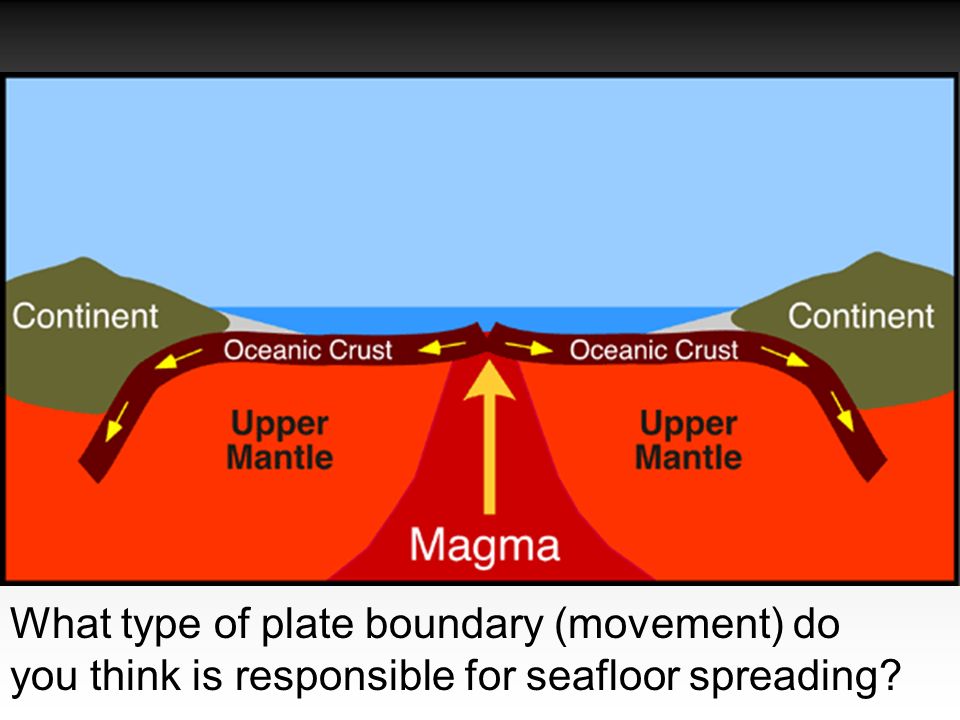As upwelling of magma continues the plates continue to diverge a process known as seafloor spreading samples collected from the ocean floor show that the age of oceanic crust increases with distance from the spreading centre important evidence in favour of this process.
Sea floor spreading is responsible for what.
Continental shelf 300 feet continental slope 300 10 000 feet abyssal plain 10 000 feet abyssal hill 3 000 feet up from the abyssal plain seamount 6 000 feet.
Seafloor spreading occurs along mid ocean ridges large mountain ranges rising from the ocean floor.
This can result in an ever widening seafloor at the.
Harry hess argues that the continents had once been one and have drifted apart.
These age data also allow the rate of seafloor spreading to be determined and they show that rates.
Due to this continuous seafloor spreading occurs and makes atlantic ocean floor to be connected to other continental crust making the ocean gets wider over the time.
The mid atlantic ridge for instance separates the north american plate from the eurasian plate and the south american plate from the african plate the east pacific rise is a mid ocean ridge that runs through the eastern pacific ocean and separates the pacific plate from the north american.
Hess proposes sea floor spreading 1960.
Spreading rates determine if the ridge is fast intermediate or slow.
The process of subduction and sea floor spreading can change the size and shape of the oceans.
The following features are shown at example depths to scale though each feature has a considerable range at which it may occur.
For instance the atlantic ocean is believed to be expanding because of its few trenches.
This graphic shows several ocean floor features on a scale from 0 35 000 feet below sea level.
This idea played a pivotal role in the development of the theory of plate tectonics which revolutionized geologic thought during the last quarter of the 20th century.
Subduction and sea floor spreading are processes that could alter the size and form of the ocean.
With the discovery of plate tectonics and the mapping of the earth.
Hess went on to say that as the ocean crust spreads and cools over millions.
The rate at which new oceanic lithosphere is added to each tectonic plate on either side of a mid ocean ridge is the spreading half rate and is equal to half of the spreading rate.
This seafloor spreading hypothesis had been proposed a few years earlier by harry hess a petrologist at princeton university and robert dietz an oceanographer in the us coast and geodetic survey the federal department that made maps of the oceans and us coastlines.
Seafloor spreading theory that oceanic crust forms along submarine mountain zones and spreads out laterally away from them.
Because of these processes the ocean floor is renewed about every 200 million years.
Seafloor spreading is the continuous process of forming new igneous rock at midocean ridges by injection of magma that forms new seafloor.


